During the last days of Ramadan, Zamalek's Art Corner Gallery is hosting a new exhibition that celebrates the rich history of Arabic calligraphy – with a modern twist.
'The Story of Arabic Calligraphy' features the work of fourteen artists who have been inspired by the Islamic and Arab heritage of calligraphic art. Their works draw on the elegant curves of the Arabic text in order to create new artistic pieces with a modern flavour.
"The purpose of the exhibition was not to create classic Islamic paintings that rely on techniques or the basic rules of Arabic calligraphy," calligrapher and artist Mahmoud Atef explained to Ahram Online on Thursday at the exhibition's opening.
“Arabic calligraphy artists in the (medieval) Islamic world used only two colours, blue and brown, unlike the exhibition's paintings which have all sorts of colours to present words with a modern touch,” Atef said.
"The whole idea of my painting came to me from a book about relationships between human beings and how they are not complete," Atef added. “That’s why you’ll find some of the letters are not completed and that’s why all the paintings have different words in Arabic meaning 'love,' to capture the various formations of relationships in the modern era.”
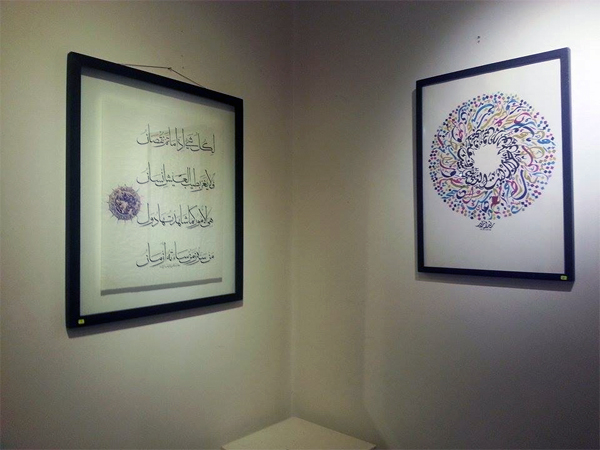
Mahmoud Atef's painting in Art Corner gallery in Cairo's Zamalek district, Egypt (Photo: Hala Safwat)
A history of Arabic calligraphy
Arabic text developed from Nabataean script – a form of writing used by the Nabataeans, who lived in territory located in modern-day Jordan, north-western Saudi Arabia and the Sinai Peninsula, and centred on Petra.
Historians have demonstrated the connection between Nabataean script and Arabic, using archaeological evidence such as the Namara inscription from Syria in 328AD, which uses Nabataean script to write Arabic, and the Zabad inscription from Syria in 512AD which is in three languages, Greek, Syriac, and Arabic. In this inscription, the Arabic text is recognisable but shows Nabataean influence.
"Researchers have argued that Arabic text originated between the era of the Namara inscription and and Zabad inscription, and the Harran inscription (of 568 AD) is considered the era of Nabataean transition to the Arabic script," calligrapher Mounir El-Shaarani told Ahram Online.
According to El-Shaarani's research on Arabic calligraphy and its origin, the proliferation of artistic styles of writing in Arabic were mainly developed in order to beautify written copies of the Quran.
Within the two main styles, angular and cursive, lots of fonts later developed, among them kufic, muhaqq, reihan and naskh.
The later style was adopted for Quranic text and is now known as "Islamic calligraphy.”
Kufic, coming from the town of Kufa in Iraq where the script originated in pre-Islamic times, was also used for the Quran.
Arabic used to be written without any dots, until the famous Iranian calligrapher Abn Meqela introduced them in the 9th century, in an attempt to make reading the script easier.
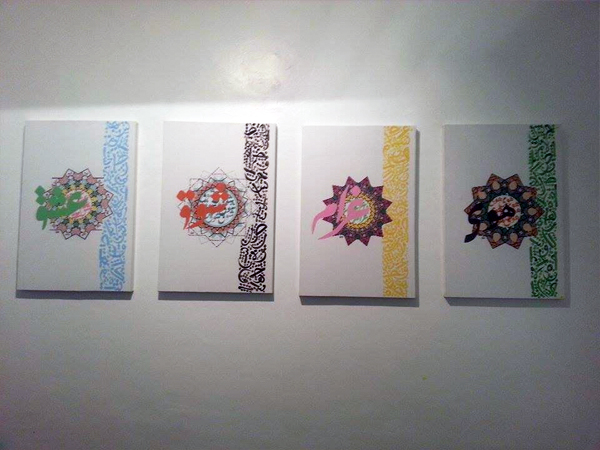
Mahmoud Atef's painting in Art Corner gallery in Cairo's Zamalek district, Egypt (Photo: Hala Safwat)
The artists whose work is on display in Zamalek have drawn on this history of Islamic and Arabic heritage, reinvigorating it with new ideas and techniques to express their ideas.
“I wanted to present my work away from the ordinary calligraphy writing style, and mix it with contemporary art,” Randa Zayed told Ahram Online. “The lines and objects represent many cultures such as the Native American,” said Zayed. Her work uses the dream catcher motive common to Native American culture, and like Atef uses colours that depart from the traditional palette of Arab calligraphy.
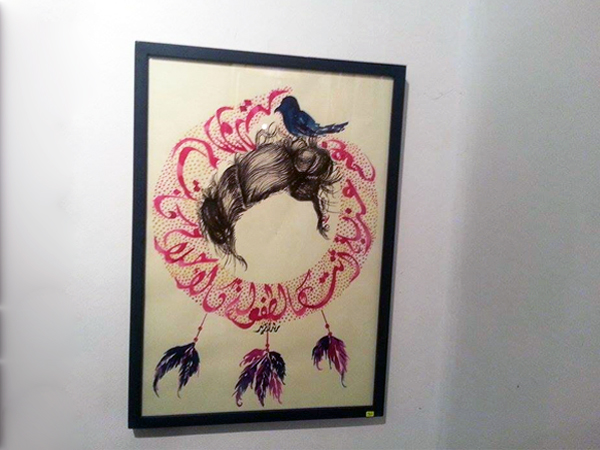
Randa Zayed's painting in Art Corner gallery in Cairo's Zamalek district, Egypt (Photo: Hala Safwat)
Doaa Abdel-Hadi described her work as using “buzzy words” that have an impact on the listener. “I presented the Arabic calligraphy in a doodle form,” she said.
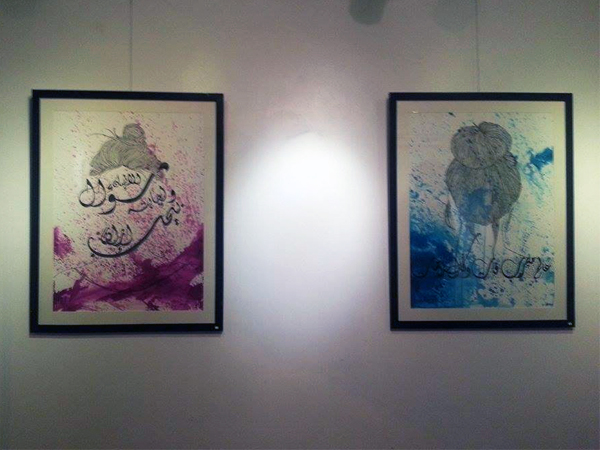
Doaa Abdel Hadi's painting in Art Corner gallery in Cairo's Zamalek district, Egypt (Photo: Hala Safwat)
"I used the power of words and poem in my painting instead of drawing facial features, to capture the (person's) essence with Arabic Islamic calligraphy,” she added.
The exhibition features 14 artists: Doaa Abdel-Hadi, Ahmed Ramadan, Randa Zaid, Zeinab Mahmoud, Doaa Orabi, Walid El-Deeb, Nahed Shaker, Heba El-Sayed, Hanan Yousef, Mohammed El-Shall, Mohammed Abdul-Hadi, Mahmoud Atef, Adel El-Jamal, and Essam Kamal.
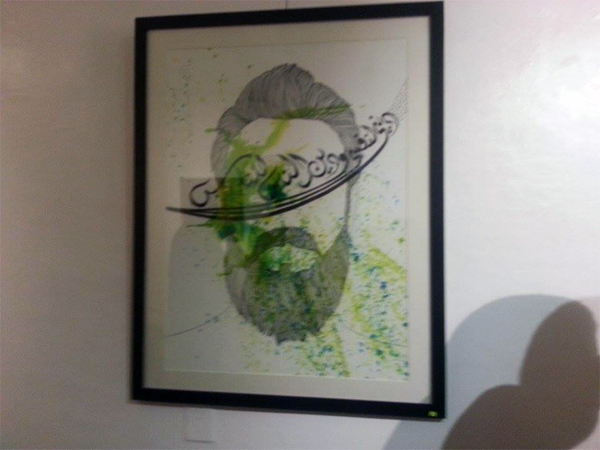
Doaa Abdel Hadi's painting in Art Corner gallery in Cairo's Zamalek district, Egypt (Photo: Hala Safwat)
The exhibition runs until 24 July. It is open everyday except Sundays, from 12pm to 5pm and from 8pm to 10pm.
Short link: